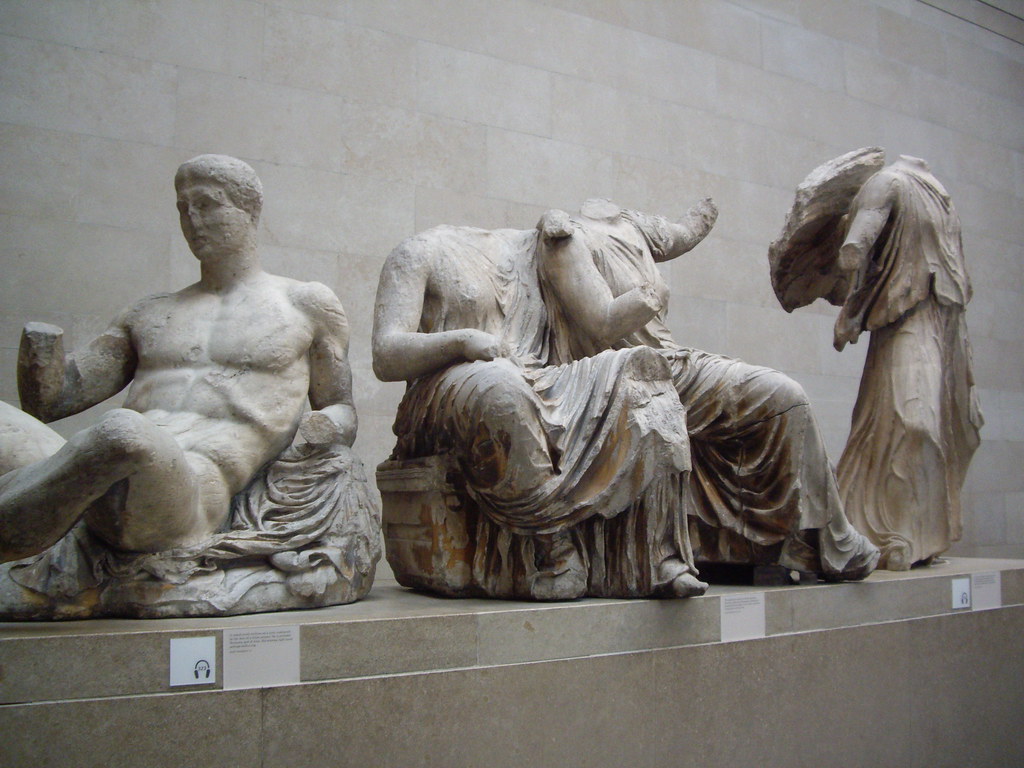The Parthenon is one of the most important buildings in Greece and in the World. It is generally considered to be the culmination of the development of the Doric order.

Image source: https://search.creativecommons.org/photos/1205304d-5818-4b57-91ea-503e0167dba2 by Images George Rex
When was it built and why it is so important?
The Parthenon is an ancient temple, on the Athenian Acropolis, in Greece, dedicated to the Goddess Athena, whom the Athenians considered their protector.
Construction began in the period in which the Athenian empire was at the height of its strength, in 447 BC. It was completed in 438 BC although the decoration of the building continued until 432 BC. It is the most important surviving building of Classical Greece, generally considered the zenith of the Doric order. Its decorative sculptures are considered to be some of the high points of Greek art. The Parthenon is considered one of the greatest cultural monuments in the world, a symbol of Ancient Greece, Athenian democracy, and western civilization.
Architecture:
The basic structure of the Parthenon remained intact, despite the white marble having suffered damage over the centuries, including the loss of most of its sculpture.
A colonnade of baseless fluted columns with square capitals stands on a three-step base and supports an entablature.
- Entablature, or roof structure, consisting of a simple architrave, or stone band;
- an alternating frieze of triglyphs (vertically grooved blocks) and metopes (smooth blocks with relief sculpture, now partially removed);
- and, at the east and west ends, a low triangular pediment, also with relief sculpture (now largely removed).

Image source: https://search.creativecommons.org/photos/229bd5cc-cc2b-4699-b5f7-db2a00e09ab1 by Jorge Lascar
The colonnade, composed of 8 columns to the east and west and 17 to the north and south, encloses a walled internal rectangular chamber, called cella, originally divided into three naves by two smaller Doric colonnades closed at the western end just behind the great cult statue.
Behind the cella, is a smaller, square chamber that is accessed from the west. A six-column portico faces the east and west ends of the building’s interior. Starting at the top step of the base, the building is 101.34 feet (30.89 meters) wide and 228.14 feet (69.54 meters) long.
Decoration:
The Parthenon is a Doric temple with Ionic structural characteristics. The richness of the Parthenon is a unique decorations for a classic Greek temple.
Metope:
The frieze of the Parthenon’s entablature contained ninety-two metopes Doric (made by Phidias and his pupils), carved as reliefs. The metopes, agreeing with the logs of the buildings, are dated as the years 446-440 BC.
- The metopes of the east side of the Parthenon, above the main entrance, depict the Gigantomachy (a mythical battles between the Olympian gods and the Giants).
- The metopes of the west side show Amazonomachy (mythical battle of the Athenians against the Amazons).
- The metopes of the south side – except for 13-20 metopes now lost – show the Thessalian Centauromachy.
- On the north side of the Parthenon, the metopes are poorly preserved, but the subject seems to be the sack of Troy.

Image source: https://search.creativecommons.org/photos/86fc1756-f9e6-432d-b14e-d2cf736e8d02 by Xuan Che
Frieze:
The most characteristic feature in the decoration of the Parthenon is surely the long Ionic frieze on the outside walls of the cell. It is an innovative feature since the rest of the temple is built in Doric style.
The continuous marble frieze was 160 meters long of which 130 have survived, about 80%, now located in various European museums.
In a first simple reading, the frieze is the solemn procession that was held every four years during the Panathenaic festivals.
Are possible different interpretations about the meaning of the representation, or its possible attribution to a specific historical event.

Image source: https://search.creativecommons.org/photos/7b612fb3-7579-467a-b2f8-7004c94b58a3 by Peter O’Connor aka anemoneprojectors
The fact that it is the representation of a community event, which was tied to the worship of Athena and then of the home and the goddess represented: individuals of all stratum of society could identify with the characters of the frieze and recognize the various moments of the ceremony.
The entire frieze was designed to be read from the corner south-west: the viewer from this angle could choose to head north, or head directly to the east. From the corner southwest of the frieze take-off thus two processions run around the cell to merge then on the east side (the entrance to the temple), the center of which is represented the gesture of delivery of Peplum to the goddess Athena. The gesture of delivery attends to the hosts of gods and heroes.

Image source: https://search.creativecommons.org/photos/ba6a04ab-0e15-41c2-aed7-62e9a2669309 by scazon
Pediments:
The traveler Pausanias, when he visited the Acropolis and saw the Parthenon, he only described the gables.
- The East pediment narrates the birth of Athena from the head of her father, Zeus.
- The West pediment narrates the dispute between Athena (the olive branch) and Poseidon (which gives the water) during their competition for the honor of becoming the city’s patron, and consists of statues in the round recessed in the eardrum.

Image source: https://search.creativecommons.org/photos/a2bc1dc7-c3c6-40e7-845c-f946ddd090c4 by virtusincertus
The carvings of the pediments of the Parthenon are some of the best examples of classical Greek art, the work on the pediments lasted from 438 to 432 BC.

Image source: https://search.creativecommons.org/photos/d35fb059-ee69-49ad-a4f2-06e2fe608e8a by Gary Lee Todd, Ph.D.
Info sources:
https://en.wikipedia.org/wiki/Parthenon
